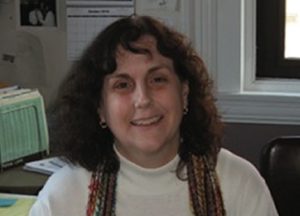Welcome, Students!
Writing is about choices. When we write, we are usually trying to communicate something to someone, even if we are only communicating with ourselves through our journals and grocery lists. More often, though, we are trying to communicate ideas and information to people who cannot read our minds. We know what we mean, but trying to make that meaning clear to another human being can be difficult, so we need to make choices about how best to convey our message.
About This Book
I have crafted Reading and Writing Successfully in College to help you improve your ability to make choices about writing specifically in an academic setting. There’s no formula for successful writing in every setting because writing situations are so variable, but there are strategies and techniques that you can practice. This text is designed to provide you with a range of approaches for you to try so that you can find the ones that work for you.
I’ve organized the book in four sections, designed to help you locate the strategies and techniques you need as you work on your assignments:
- Successful College Reading provides a guide for reading actively, including strategies for choosing where and when to read, annotating texts, and identifying main points. This section focuses on non-fiction texts because these make up the majority of what you will read in college.
- Writing as Intellectual Work helps you think about writing assignments as more than just a demonstration of your knowledge. Using a model of learning called “Bloom’s Taxonomy,” this section helps you figure out the kinds of thinking that your professor is looking for when they give you a writing assignment.
- Writing Process in College offers a range of techniques for managing the writing process, some of which may already be familiar and some of which may be new. I’m a big fan of leveraging technology to help us write more effectively, so a number of exercises rely on features in your word processor, but many of these same techniques can be done with paper and pen if you prefer.
- Writing with Sources focuses on how to find credible sources and use them well in academic writing. Here you’ll find guides for evaluating your sources, with a focus on internet sources, as well as information about summarizing, paraphrasing, quoting, and citing.
The writing choices you make will help others better understand your ideas and help you think and learn more effectively—and not only in college. I sincerely hope that you find this text useful in helping you make those choices.
Most of the ideas and activities in this book have been developed and refined through work with my students over nearly 30 years of teaching. During the last year, students have actively helped me with this book through an open pedagogy assignment. I asked students to work in groups to revise sections of this text: to change the language, make ideas clearer, define unfamiliar words, add visuals and examples, and generally to help me make this book more effective for you. Where they have given me permission, I have included their names, and I am grateful for their help. I plan to continue using this assignment, and I will include their work in future versions of this book.
About Me
When I first entered graduate school, I thought I was going to study postmodern novels, and I took a job teaching writing to pay for my tuition. But as my first semester of teaching progressed, I found myself much more interested in what was going on with my students than in the novels I was reading. And I was particularly fascinated by the scholarship in my composition theory and pedagogy course. So much to learn!
I have been learning about writing ever since. Nearly every semester of my academic career, I have taught first-year writing, and I know it sounds clichéd, but I learn so much from my students. My students have taught me to see them each as individuals with something of their own to say. They have taught me that no one strategy writing works for everyone, which has forced me to be agile in my suggestions and guidance. My students have also gifted me with ideas about using highlighters and the concepts of “rainbow paragraphs” and “final-ish drafts” (the drafts they submit for my feedback before revising them for portfolios).
In addition to teaching writing, I garden, knit, read, and play online puzzle games with one of my children and MMORPGs with my partner and another child (right now, it’s classic World of Warcraft). I have fostered dogs in recent years, though I’m not doing that right now because my dog has gotten older and less tolerant—I’m not going to make him share our attention during his golden years. I enjoy and collect wooden jigsaw puzzles, both classic and modern.
When I was a child, I would come home from school and teach my younger sister everything that I had learned. She ended up skipping a grade as a result! It’s no surprise that I became a teacher and landed in a career where I can have the first day of school twice a year. Thank you to my students and my colleagues for sharing this ride with me!


